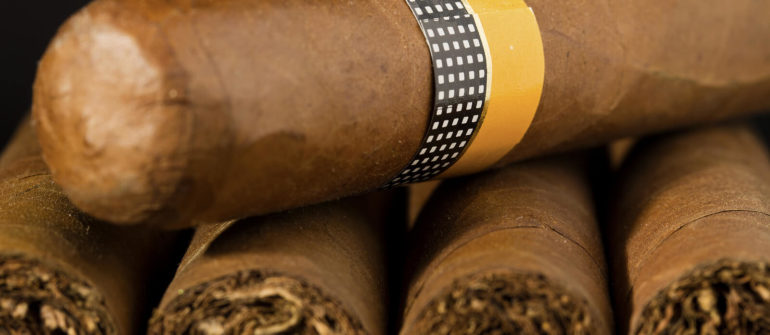Some cigar shapes are more typical, which you’ll likely see time and time again. Others, however, are more distinctive and offer a different smoking experience to the usual wraps you’ll see on the market.
In this guide, we’ll take you through the varying types of cigar sizes and shapes so you’ll have a better understanding of what you’re buying the next time you order a box of cigars.
PAREJOS
The types of cigar shapes we’ll soon explain fit into one of two categories. The first is parejos, which is the more traditional cigar option. These cigar types are a classic cylindrical shape with straight edges, leading smoothly to an open foot. With parejos cigars, you’ll usually need to cut the cap to ensure an easy draw once lit.
In terms of options, the most common cigar types that fit into the parejos category are the corona and the churchill.
FIGURADOS
In contrast to parejos cigars, figurado cigar shapes include any types of cigars that aren’t straight-sided or cylindrical. They’re the more unusual-looking cigars, giving a completely different and weirdly wonderful smoking experience to what you might usually experience.
Because figuardos cigar types are less common, these are the ones we’ll discuss in greater detail.
TORPEDO
Torpedo-shaped cigars are sometimes confused with pyramids. They’ve actually become something of a rarity in the modern-smoking world but are distinctive when you do come across them. You’ll notice a torpedo from its tapered head, ending in a point. It also has a closed foot and will usually bulge slightly in the middle where there is more tobacco.
PERFECTO
The perfecto is similar to torpedo-shaped cigars in that it has a slight bulge in the middle of the stick. However, the major difference is the head, which is typically more rounded like a parejos cigar. The interesting thing about perfecto cigar shapes is that they vary significantly in length, ranging anywhere between 4½ to 9-inches. Even ring gauge sizes can jump from 38 to 48, which isn’t typical across most vitolas.
PYRAMID
Again, pyramids are often confused with torpedo-shaped cigars because they have a similarly tapered head. However, the major difference is that pyramid cigars have an open foot, making lighting the cigar much easier. They generally vary between 6 and 7 inches in length.
BELICOSO
Belicoso cigar shapes are traditionally similar to pyramid types of cigars. However, they differ in length, falling slightly shorter than the pyramid. The classic version of a belicoso cigar will usually land at a length of 5-½ inches, with a typical ring gauge size of around 50.
It’s important to note that the modern-day belicoso cigar is incorrectly named, as they are more similar to a corona gorda. The only authentic aspect of the current belicoso is that they have a tapered head, which is traditional of the originals. Today’s buyers may come across mini-belicoso cigars, which are shorter and slimmer than the typical belicoso.
DIADEMA
Diadema cigars are the biggest figurados you can get, coming in at a huge 8-½ inches and a 40 ring gauge (at least). These types of cigars are interesting because they have a pointed head and a tapered foot. However, the foot’s structure can vary between brands, with some offering a closed foot and others an open one. Because of the sheer size of diadema cigars, it’s not one we would recommend if you’re looking for a quick smoke – it should be enjoyed at a leisurely pace and at a time you’re not watching the clock.
CULEBRA
Ok, this is where things get a little creative. The impactful culebra is arguably the most creative of the cigar shapes, with three notable cigars expertly braided and tied together.
We should probably clarify that you don’t smoke all three of the cigars simultaneously – culebra cigars are sold as one but should be smoked separately. It’s a cigar that is arguably more for show but can also be symbolic. They’re a rarity on the market today, so if you are lucky enough to come across one, you might like to share it with two friends.
Hopefully this guide has given you more insight into the different cigar types and sizes on offer, to help you decide which cigar to purchase next time you’re looking for a new stogie to try.
